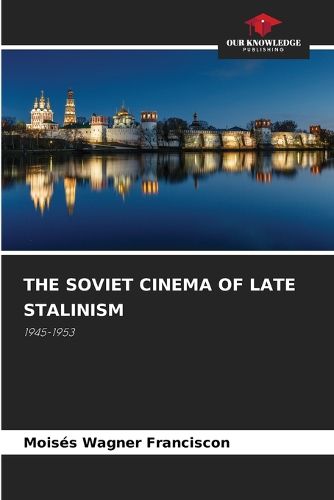Readings Newsletter
Become a Readings Member to make your shopping experience even easier.
Sign in or sign up for free!
You’re not far away from qualifying for FREE standard shipping within Australia
You’ve qualified for FREE standard shipping within Australia
The cart is loading…






This title is printed to order. This book may have been self-published. If so, we cannot guarantee the quality of the content. In the main most books will have gone through the editing process however some may not. We therefore suggest that you be aware of this before ordering this book. If in doubt check either the author or publisher’s details as we are unable to accept any returns unless they are faulty. Please contact us if you have any questions.
Between 1945 and 1953, the USSR experienced Stalin's last years in power. The country was rebuilding after the hecatomb of the Second World War. Cinema itself was rising from the physical destruction in the West and its mobilization for the war effort through its studios relocated to the East, in Central Asia. The constitution of cinema under late Stalinism went through phases. From 1945 to 1947, challenging, critical and audacious films were made by filmmakers who took advantage of the autonomy gained by society during the war and the state's need to garner support. But there were also engaged filmmakers at every turn. After 1947, artistic freedom was curtailed and cinema was coerced or invited to participate in the project of national unity in the face of a new conflict, now cold in Europe and hot in the nascent Third World. To combat anti-communist and anti-Soviet propaganda, the cinema produced anti-Anglo-American propaganda. They could be seen as the usual capitalists, oppressive, greedy and exploitative, but they could also be drunk - not on vodka, but on gin for the poor or whiskey for the rich.
$9.00 standard shipping within Australia
FREE standard shipping within Australia for orders over $100.00
Express & International shipping calculated at checkout
Stock availability can be subject to change without notice. We recommend calling the shop or contacting our online team to check availability of low stock items. Please see our Shopping Online page for more details.
This title is printed to order. This book may have been self-published. If so, we cannot guarantee the quality of the content. In the main most books will have gone through the editing process however some may not. We therefore suggest that you be aware of this before ordering this book. If in doubt check either the author or publisher’s details as we are unable to accept any returns unless they are faulty. Please contact us if you have any questions.
Between 1945 and 1953, the USSR experienced Stalin's last years in power. The country was rebuilding after the hecatomb of the Second World War. Cinema itself was rising from the physical destruction in the West and its mobilization for the war effort through its studios relocated to the East, in Central Asia. The constitution of cinema under late Stalinism went through phases. From 1945 to 1947, challenging, critical and audacious films were made by filmmakers who took advantage of the autonomy gained by society during the war and the state's need to garner support. But there were also engaged filmmakers at every turn. After 1947, artistic freedom was curtailed and cinema was coerced or invited to participate in the project of national unity in the face of a new conflict, now cold in Europe and hot in the nascent Third World. To combat anti-communist and anti-Soviet propaganda, the cinema produced anti-Anglo-American propaganda. They could be seen as the usual capitalists, oppressive, greedy and exploitative, but they could also be drunk - not on vodka, but on gin for the poor or whiskey for the rich.